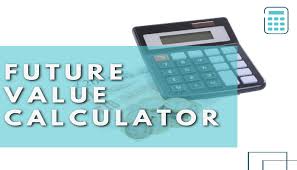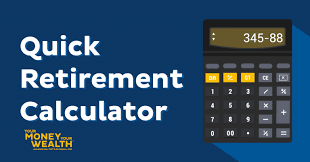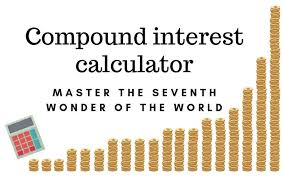Discover the world of financial growth with our comprehensive guide, featuring the Future Value Calculator (FV Calculator ). This essential tool will help you maximize your investment potential, making it easier than ever to achieve financial security and long-term wealth. Don’t miss out on the opportunity to unlock the true potential of your savings; dive into our guide and start planning for a prosperous future today.Let me explain in details like FV,FV Annuity Formula (FV Formula) etc.
Future Value Calculator
Future value definition
If you’re interested in planning for your financial future or evaluating potential investments, understanding the concept of future value is crucial. Future value refers to the amount of money that an investment or asset is expected to grow to over a period of time, taking into account factors like interest, compound interest, and inflation.
To calculate future value, you’ll need to use a formula that takes into account several variables, including the initial investment amount, the interest rate or rate of return, and the length of time the investment will be held. There are many online calculators and tools available that can help you quickly and easily calculate future value, but understanding the underlying concept is still important.
Future value can be calculated using a number of different formulas, depending on the specific variables involved. One common formula is the future value of a lump sum, which calculates the expected value of a single, one-time investment over a specified time period. Another common formula is the future value of an annuity, which calculates the expected value of a series of regular, equal payments over a specified time period.
It’s important to note that future value calculations are based on a number of assumptions and variables that may not hold true in the real world. For example, the interest rate used in a future value calculation may not remain constant over time, or the inflation rate may be different than anticipated. As such, it’s important to consider these variables when making investment decisions and to be aware of the potential risks involved.
In addition to helping you make investment decisions, understanding the concept of future value can also be useful in other areas of personal finance. For example, it can help you evaluate different savings or retirement plans and determine which options may provide the best long-term value.
In conclusion, future value is a crucial concept in personal finance and investment planning. By understanding how future value is calculated and what factors can impact it, you can make more informed investment decisions and plan for your financial future with greater confidence. Whether you use an online calculator or work out the formula by hand, taking the time to understand future value can pay off in the long run.
The Time Value of Money
The time value of money is a key concept in personal finance that refers to the idea that the value of money changes over time due to factors like interest, inflation, and the opportunity cost of alternative investments. Understanding the time value of money is crucial for making informed investment decisions and planning for your financial future.
At its core, the time value of money is based on the idea that a dollar today is worth more than a dollar in the future, due to the potential earning power of that dollar over time. For example, if you invest $100 today and earn a 5% return, that investment will be worth $105 in one year. Conversely, if you wait one year to invest the $100, it will only be worth $100 and you will have missed out on the opportunity to earn the additional $5.
One key factor that impacts the time value of money is interest rates. When you invest money in a savings account, bond, or other interest-bearing investment, you earn interest on your initial investment as well as any interest that accumulates over time. This compounding effect can result in significant growth over time, as the interest earned on the investment is reinvested and continues to compound.
Another factor that impacts the time value of money is inflation. Inflation refers to the gradual increase in the price of goods and services over time, which reduces the purchasing power of a given amount of money. As such, the longer you wait to spend or invest your money, the less it will be able to buy in the future.
To take advantage of the time value of money, it’s important to start investing and saving as early as possible. Even small amounts of money invested over a long period of time can result in significant growth, thanks to the compounding effect of interest. Additionally, it’s important to consider the potential opportunity cost of alternative investments when deciding where to put your money.
In conclusion, the time value of money is a crucial concept in personal finance that can help you make more informed investment decisions and plan for your financial future. By understanding how the value of money changes over time, you can take advantage of the potential growth opportunities presented by interest and compounding, while also being aware of the impact of inflation and the importance of investing early.
Why you need to calculate future value?
Calculating the future value of your investments is a crucial step in financial planning that can help you make informed decisions about your money and achieve your long-term financial goals. Whether you’re saving for retirement, investing in stocks or real estate, or simply trying to grow your savings, understanding the future value of your investments is essential for maximizing your returns and minimizing your risk.
One of the primary benefits of calculating future value is that it helps you forecast the growth potential of your investments over time. By using a future value calculator or formula, you can estimate how much your investments will be worth in the future, based on factors like interest rates, inflation, and the length of your investment term. This information can help you make more informed investment decisions, by allowing you to compare the potential growth of different investment options and choose the one that offers the best returns.
Another benefit of calculating future value is that it can help you set realistic financial goals and track your progress towards achieving them. By forecasting the growth potential of your investments, you can determine how much you need to save or invest each month to reach your desired financial goals, such as saving for a down payment on a home, paying for your children’s education, or retiring comfortably. You can also use future value calculations to track your progress towards these goals over time, and make adjustments to your investment strategy if necessary.
Calculating future value can also help you make informed decisions about when to buy or sell investments. By using a future value calculator or formula, you can estimate how much your investments will be worth in the future, based on different investment scenarios. This information can help you determine the best time to buy or sell investments, based on factors like market conditions, interest rates, and your own financial goals.
In addition, calculating future value can help you manage risk and make more informed investment decisions. By forecasting the growth potential of your investments, you can identify potential risks and take steps to mitigate them, such as diversifying your portfolio, investing in low-risk assets, or choosing investments with a proven track record of returns. This information can also help you avoid making impulsive investment decisions based on short-term market fluctuations or emotional reactions.
In conclusion, calculating the future value of your investments is a crucial step in financial planning that can help you achieve your long-term financial goals and minimize your risk. By using a future value calculator or formula, you can estimate the growth potential of your investments, set realistic financial goals, make informed investment decisions, and track your progress over time.
Future value formula / FV Formula
The future value formula is based on the principle of compound interest, which means that the interest earned on an investment is added to the principal, and then the interest is calculated on the new total. The formula for calculating the future value of an investment is:
FV = PV x (1 + r) ^ n
where:
FV = Future Value PV = Present Value (the initial investment amount) r = Interest Rate n = Investment Term (the number of compounding periods)
The future value formula calculates the growth potential of an investment over time, assuming that the interest rate remains constant and is compounded at regular intervals. The result of this calculation is the estimated future value of the investment at the end of the investment term.
Example Calculation
Let’s say you invest $10,000 in a savings account that pays an annual interest rate of 5%, compounded annually, for a period of 10 years. To calculate the future value of this investment using the future value formula, you would plug in the following values:
PV = $10,000 r = 5% (or 0.05) n = 10 years
FV = $10,000 x (1 + 0.05) ^ 10 FV = $10,000 x 1.62889 FV = $16,288.90
So, in this example, your $10,000 investment would be worth approximately $16,288.90 at the end of the 10-year investment term.
The formula for calculating future value is:
FV = PV x (1 + i)^n
Example 1 – Calculating the Future Value
Let’s say you want to invest $10,000 in a mutual fund that earns 5% interest per year for 10 years. To calculate the future value of your investment, you would use the formula:
FV = $10,000 x (1 + 0.05)^10 FV = $16,386.16
So, after 10 years, your $10,000 investment would be worth $16,386.16.
Example 2 – Calculating the Present Value
Sometimes, you may want to know how much money you need to invest today to reach a certain future value. This is where calculating the present value (PV) comes in handy.
Let’s say you want to have $50,000 in your bank account in 10 years, and you expect to earn 4% interest per year. To calculate the present value of your investment, you would use the formula:
PV = $50,000 / (1 + 0.04)^10 PV = $33,200.12
So, you would need to invest $33,200.12 today to have $50,000 in 10 years.
Example 3 – Calculating the Number of Time Periods
Sometimes, you may want to know how long it will take for your investment to reach a certain future value. To calculate the number of time periods (n), you would use the formula:
n = log(FV / PV) / log(1 + i)
Let’s say you have $20,000 to invest and want it to grow to $40,000 at an interest rate of 6% per year. To calculate the number of time periods it will take to reach your goal, you would use the formula:
n = log($40,000 / $20,000) / log(1 + 0.06) n = 11.55 years
So, it will take approximately 11.55 years for your investment to double in value at a 6% annual interest rate.
Example 4 – Calculating the Interest Rate
Lastly, you may want to know what interest rate you need to earn to reach a certain future value. To calculate the interest rate (i), you would use the formula:
i = (FV / PV)^(1/n) – 1
Let’s say you have $5,000 and want to grow it to $10,000 in 7 years. To calculate the interest rate you need to earn, you
would use the formula:
i = ($10,000 / $5,000)^(1/7) – 1 i = 0.10025 or 10.025%
So, you would need to earn a 10.025% annual interest rate to double your investment from $5,000 to $10,000 in 7 years.
Final Thoughts
Calculating future value is an essential skill for any investor. By understanding how to calculate future value, present value, the number of time periods, and the interest rate, you can make informed investment decisions and maximize your returns.
Remember, when calculating future value, it’s important to consider factors like inflation, taxes, and fees. Additionally, keep in mind that past performance is not a guarantee of future results, and there are always risks involved with investing
How to double your money? – the rule of 72
We all want to make our money work for us, but the question is, how can we double our money? There’s no guaranteed way to do it, but there is a simple mathematical principle that can give us an idea of how long it will take for our money to double. This principle is called the rule of 72, and in this article, we’ll explain what it is and how to use it to double your money.
What is the Rule of 72?
The rule of 72 is a quick and easy way to estimate how long it will take for an investment to double in value. To use the rule, you simply divide 72 by the rate of return on your investment. The resulting number is the number of years it will take for your investment to double in value.
For example, if you have an investment that earns a 6% annual rate of return, it will take approximately 12 years (72 divided by 6) for your investment to double in value.
How to Use the Rule of 72 to Double Your Money
Now that you know what the rule of 72 is, let’s take a look at how you can use it to double your money. Here are some tips to help you get started:
- Start with a realistic rate of return
Before you can use the rule of 72, you need to have an idea of what rate of return you can expect from your investment. Different types of investments will have different rates of return, so it’s important to do your research and choose an investment that fits your risk tolerance and investment goals.
- Be patient
Doubling your money takes time, so it’s important to be patient and give your investment time to grow. If you’re looking to double your money quickly, you may need to take on more risk, which could result in higher potential returns, but also higher potential losses.
- Consider compounding
Compounding is the process of earning interest on your interest, and it can be a powerful way to grow your wealth over time. By reinvesting your earnings, you can take advantage of compounding and potentially speed up the process of doubling your money.
- Keep an eye on fees
Fees can eat into your investment returns, so it’s important to keep an eye on them and choose investments with low fees. Over time, even small fees can add up and impact your ability to double your money.
- Diversify your investments
Diversification is key to reducing risk and maximizing returns. By spreading your investments across different asset classes and industries, you can potentially minimize losses in one area by offsetting them with gains in another.
Conclusion
The rule of 72 is a simple yet powerful tool that can help you estimate how long it will take for your investments to double in value. By starting with a realistic rate of return, being patient, considering compounding, keeping an eye on fees, and diversifying your investments, you can increase your chances of successfully doubling your money. However, it’s important to remember that there’s no guaranteed way to double your money, and all investments come with risk. Always do your research and consult with a financial advisor before making any investment decisions.
What’s the future value of $1000 after five years at 12% per year?
We’ll use the future value formula to calculate the future value of $1000 after five years at 12% per year.
What is the Future Value Formula?
The future value formula is a mathematical formula that calculates the future value of an investment. The formula takes into account the present value of the investment, the interest rate, and the number of years the investment will be held. Here’s the formula:
FV = PV x (1 + r)^n
Where:
FV = Future Value PV = Present Value r = Interest Rate n = Number of Years
How to Calculate the Future Value of $1000 After Five Years at 12% Per Year
Now that you know the future value formula, let’s use it to calculate the future value of $1000 after five years at 12% per year. Here’s how to do it:
Step 1: Identify the variables
FV = ? PV = $1000 r = 12% or 0.12 (decimal) n = 5 years
Step 2: Plug in the variables
FV = $1000 x (1 + 0.12)^5
Step 3: Solve for FV
FV = $1000 x 1.76234
FV = $1,762.34
So, the future value of $1000 after five years at 12% per year is $1,762.34.
What Does This Mean?
This means that if you invest $1000 today at an annual interest rate of 12%, after five years, your investment will be worth $1,762.34. This is assuming that the interest is compounded annually and that there are no additional deposits or withdrawals made during the five-year period.
What’s the difference between future value and present value?
In this article, we’ll break down the differences between future value and present value, and how to calculate each one.
What is Present Value?
Present value is the value of money today. It’s the amount of money you would need to have now to equal a certain amount of money in the future. Present value takes into account the time value of money, which is the idea that money is worth more today than it is in the future. This is because money can be invested or used to earn interest, and that interest can be reinvested to earn even more interest.
What is Future Value?
Future value is the value of money in the future. It’s the amount of money that an investment will be worth at a future point in time. Future value takes into account the interest or return that an investment will earn over time. This is important because the longer an investment is held, the more time it has to earn interest, and the higher its future value will be.
How to Calculate Present Value
The formula for present value is:
PV = FV / (1 + r)^n
Where:
PV = Present Value FV = Future Value r = Interest Rate n = Number of Years
Let’s say you want to know the present value of $1,000 that will be received five years from now, assuming an interest rate of 5%. Using the present value formula, we get:
PV = $1,000 / (1 + 0.05)^5
PV = $783.53
So the present value of $1,000 that will be received five years from now, assuming an interest rate of 5%, is $783.53.
How to Calculate Future Value
The formula for future value is:
FV = PV x (1 + r)^n
Where:
FV = Future Value PV = Present Value r = Interest Rate n = Number of Years
Let’s say you invest $1,000 today and expect a 7% return over five years. Using the future value formula, we get:
FV = $1,000 x (1 + 0.07)^5
FV = $1,402.55
So after five years, your investment will be worth $1,402.55.
Key Differences Between Future Value and Present Value
The main difference between future value and present value is the timing of the cash flows. Present value is the value of money today, while future value is the value of money at some point in the future. Present value takes into account the time value of money, while future value takes into account the interest or return that an investment will earn over time.
Another key difference is the formula used to calculate each value. Present value is calculated using the formula PV = FV / (1 + r)^n, while future value is calculated using the formula FV = PV x (1 + r)^n.

The Future Value Calculator (FV Calculator)
Planning for the future is a fundamental aspect of personal finance. It involves making wise investment decisions and understanding how your money can grow over time. To help you in this endeavor, the Future Value Calculator (FV Calculator) is a handy tool that empowers you to predict the value of your investments and savings down the road. In this article, we will explore the importance of the Future Value Calculator and the underlying FV Annuity Formula, also known as the FV Formula.
The FV Annuity Formula (FV Formula):
The FV Formula is the mathematical equation used to calculate the future value of an investment or a series of cash flows, particularly annuities. It provides a precise way to determine how much an investment will be worth in the future. The formula varies depending on the type of investment, but a common one for calculating the future value of an annuity is:
FV = PMT x [(1 + r)^n – 1] / r
Where:
- FV is the future value of the annuity.
- PMT represents the regular payment made into the annuity.
- r is the interest rate per period.
- n is the number of periods.
Using the Future Value Calculator (FV Calculator):
The FV Calculator simplifies the process of determining the future value of your investments. Here’s how to use it:
Input Information: Gather data on the initial investment or regular contributions (PMT), the interest rate per period (r), and the number of compounding periods (n).
Select Compounding Frequency: Choose the frequency at which interest is compounded, whether it’s annually, semi-annually, quarterly, or more frequently. This selection influences the calculation.
Calculate: Enter the values into the FV Calculator, and it will provide you with the future value of your investment or annuity.
The Benefits of a Future Value Calculator:
Accuracy: The FV Calculator ensures precise calculations, avoiding manual errors that can occur when using the FV Formula.
Time-Efficiency: Performing these calculations manually can be time-consuming. A calculator streamlines the process, allowing for quick and effortless results.
Visual Representation: Many FV Calculators provide graphs or charts that help visualize how your investments will grow over time.
Conclusion:
Planning for the future involves understanding how your money can work for you. The Future Value Calculator (FV Calculator) and the FV Formula are indispensable tools that enable you to predict the value of your investments and savings over time accurately. Whether you’re an investor, a saver, or someone preparing for retirement, these tools empower you to make informed financial decisions. By leveraging them, you can maximize your financial potential and create a more secure and prosperous future.
FAQ
- What is future value?
Future value is the value of an investment at a specific point in the future, based on its current value and the potential for growth or return. Understanding future value is important for investors because it helps them determine the potential returns on their investments.
- How is future value calculated?
Future value is calculated by using a formula that takes into account the initial investment, the expected rate of return, and the length of time the investment will be held. The formula is:
Future Value = Present Value x (1 + Rate of Return) ^ Time
- What is a good rate of return for investments?
A good rate of return for investments varies depending on the type of investment and the level of risk involved. Generally, a rate of return that exceeds the rate of inflation (which is currently around 2%) is considered good. However, it’s important to remember that higher rates of return typically come with higher levels of risk.
- What is diversification?
Diversification is a strategy that involves spreading your investments across different asset classes and industries to reduce risk. By diversifying your portfolio, you can potentially minimize losses in one area by offsetting them with gains in another.
- What is the difference between stocks and bonds?
Stocks represent ownership in a company and provide investors with a share of the company’s profits and losses. Bonds, on the other hand, represent a loan to a company or government and pay investors a fixed rate of interest over a set period of time.
- What is the difference between active and passive investing?
Active investing involves actively managing your investments, such as buying and selling stocks in an attempt to outperform the market. Passive investing, on the other hand, involves investing in a broad market index, such as the S&P 500, and holding onto those investments for the long-term.
- What is the difference between a mutual fund and an exchange-traded fund (ETF)?
Mutual funds are professionally managed portfolios of stocks, bonds, and other assets, while ETFs are similar to mutual funds but trade on an exchange like a stock. ETFs tend to have lower fees than mutual funds and can be traded throughout the day, while mutual funds are priced at the end of the trading day.
Legal Notices and Disclaimer
All Information contained in and produced by the ModernCalculators.com is provided for educational purposes only. This information should not be used for any Financial planning etc. Take the help from Financial experts for any Finace related Topics. This Website will not be responsible for any Financial loss etc.





